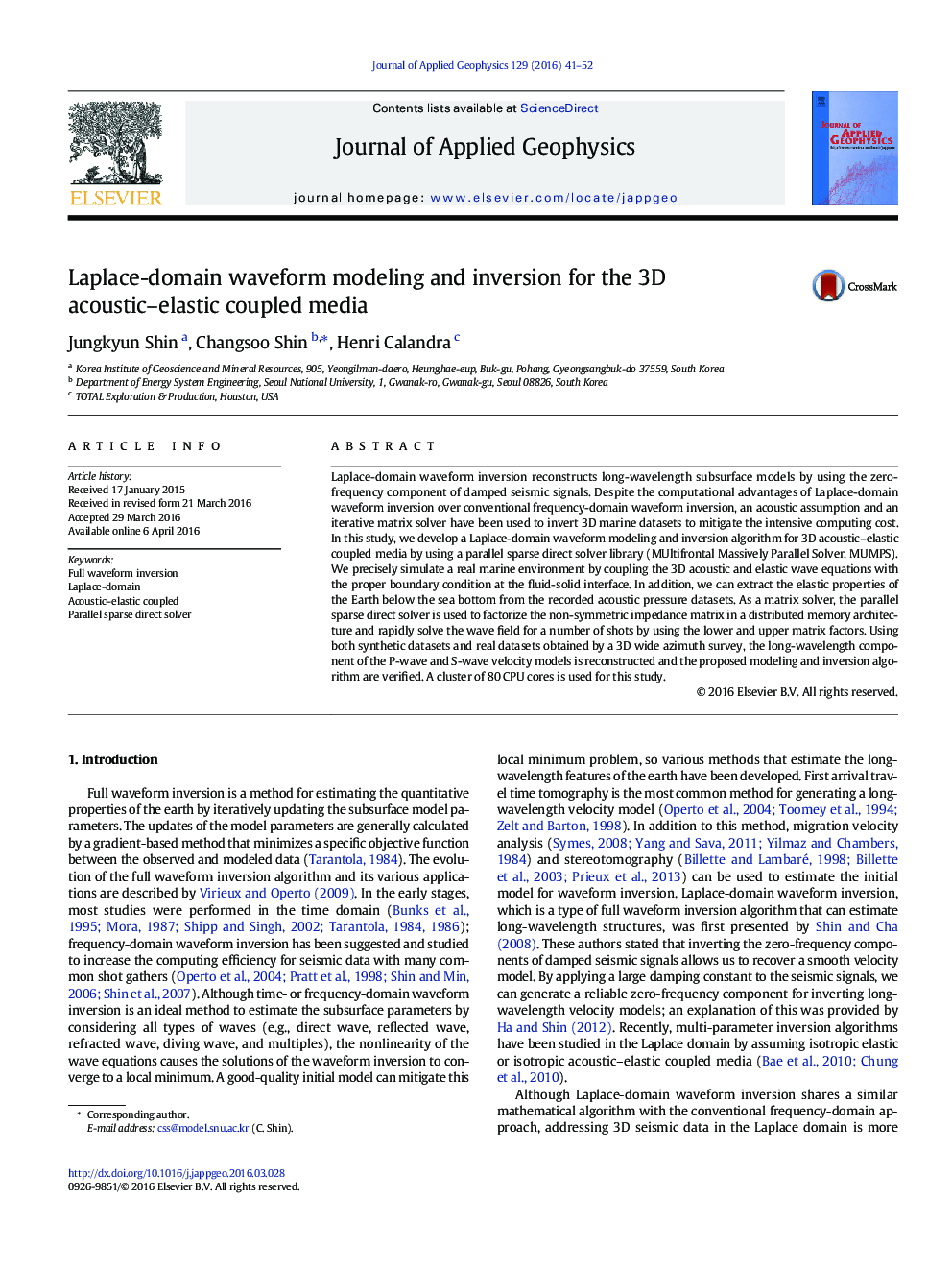| Article ID | Journal | Published Year | Pages | File Type |
|---|---|---|---|---|
| 4739828 | Journal of Applied Geophysics | 2016 | 12 Pages |
•Modeling and inversion algorithm are developed for 3D acoustic–elastic coupled media.•Parallel direct matrix solver (MUMPS) is used for 3D modeling and inversion.•3D Real WAZ dataset is used for the verification of the proposed algorithm.
Laplace-domain waveform inversion reconstructs long-wavelength subsurface models by using the zero-frequency component of damped seismic signals. Despite the computational advantages of Laplace-domain waveform inversion over conventional frequency-domain waveform inversion, an acoustic assumption and an iterative matrix solver have been used to invert 3D marine datasets to mitigate the intensive computing cost. In this study, we develop a Laplace-domain waveform modeling and inversion algorithm for 3D acoustic–elastic coupled media by using a parallel sparse direct solver library (MUltifrontal Massively Parallel Solver, MUMPS). We precisely simulate a real marine environment by coupling the 3D acoustic and elastic wave equations with the proper boundary condition at the fluid-solid interface. In addition, we can extract the elastic properties of the Earth below the sea bottom from the recorded acoustic pressure datasets. As a matrix solver, the parallel sparse direct solver is used to factorize the non-symmetric impedance matrix in a distributed memory architecture and rapidly solve the wave field for a number of shots by using the lower and upper matrix factors. Using both synthetic datasets and real datasets obtained by a 3D wide azimuth survey, the long-wavelength component of the P-wave and S-wave velocity models is reconstructed and the proposed modeling and inversion algorithm are verified. A cluster of 80 CPU cores is used for this study.
